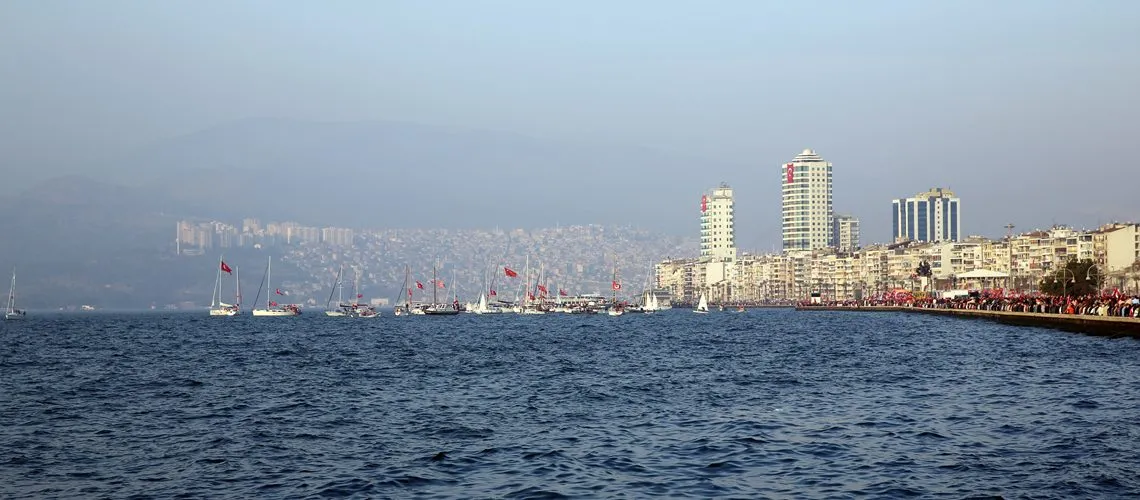Countries around the world need to adapt to the changing climate and strengthen the ability of people, infrastructure, natural and economic systems to weather these changes. How can and should they do this?
Over the past year and a half, the World Bank’s Country Climate and Development Reports (CCDRs) have been providing in-depth analysis of how well countries are prepared to meet climate and development challenges, including adaptation to climate change.
Diagnosing adaptation and resilience needs
Take Türkiye, the first country with a CCDR. In February 2023, Türkiye’s largest earthquakes in over 80 years killed more than 50,000 people and displaced 3.3 million, including many already vulnerable refugees. The earthquakes damaged over 800,000 buildings, with direct costs estimated at over $34 billion — equivalent to 4% of the country’s GDP.
Türkiye is also highly vulnerable to climate change-related extremes. In the summer of 2021, wildfires burned 139,500 hectares of forest across 54 provinces in the south; catastrophic floods and landslides followed severe storms in the Black Sea region, destroying buildings, bridges, electricity supply, causing 97 deaths, and displacing close to 2,000 people.
Türkiye is expected to experience more such impacts as the climate warms. Water scarcity, sea level rise, more frequent and severe heatwaves, floods and droughts – all pose major risks to public health, labor productivity, agriculture, infrastructure, and ecosystems.
To evaluate how Türkiye should meet its adaptation and resilience goals, we carried out an Adaptation and Resilience Assessment.
Adaptation and Resilience Assessment.
The analysis, which informed Türkiye’s CCDR, used a prioritization and scoring tool to evaluate the country’s whole-of-economy readiness for adaptation and resilience with a focus on six key areas of the country’s national climate change adaptation strategy: water resource management; agriculture and food security; ecosystems, biodiversity and forestry; disaster risk management; and public health.
Our assessment shows that Türkiye has started to lay a solid foundation for disaster risk management, climate adaptation, and resilience. However, progress has been uneven across key policy areas.
As a result of this analysis, the report identifies five key ways the country can meet its goals. While tailored to Türkiye, many recommendations on this list also apply to other countries:
- Maintain macroeconomic stability and strengthen governance to support adaptation and resilience: Macroeconomic volatility and the COVID-19 pandemic have slowed Türkiye’s impressive development progress. The country can strengthen its economy by stabilizing inflation and maintaining a predictable and transparent regulatory framework. To reduce risk, it should mainstream climate change policy objectives into public financial management instruments and investment cycles. It should also incorporate climate risks and adaptation in fiscal planning and budgeting while addressing the social and economic implications of climate change.
- Ensure inclusive economic growth and support the poorest and most vulnerable: In 2021, the World Economic Forum ranked Türkiye #133 out of 156 countries in closing the gender gap. Priorities should include the removal of barriers to women’s labor force participation – such as gender-based work restrictions and pay gaps – as well as improvements in educational opportunities for women and girls. Meanwhile, Türkiye can enhance its socioeconomic resilience by expanding access to healthcare, social protection, and financial services —including bank accounts, credit, and insurance – so the poorest can benefit. Leveraging digital technologies for early warning and disaster risk information would help reach vulnerable populations and areas in emergencies.
- Develop a comprehensive strategy for infrastructure resilience: Türkiye can go further to develop a national resilient infrastructure strategy and long-term master plan to manage public assets. Priorities include systematic climate and disaster risk assessments for critical systems integrating seismic and climate risks; updates and enforcement of building codes and construction standards; financing maintenance; and expanding disaster risk finance instruments such as through public-private partnerships.
- Increase the resilience of agriculture, food, and water: Türkiye’s agriculture sector is highly vulnerable to climate hazards including water scarcity. A comprehensive climate change adaptation strategy for the agriculture sector, along with water resources management, will build resilience in land, water and food systems. The country also has good potential to scale up monitoring and information systems, such as drought early warning and irrigation management information, along with insurance, research and development investments, and risk management mechanisms in collaboration with the private sector.
- Protect ecosystems and mainstream nature-based solutions (NBS): NBS can cost-effectively address climate and development challenges with multiple socioeconomic and environmental benefits. Compared to its OECD peers, Türkiye scores low on ecosystem health and biodiversity and its ecosystems are vulnerable to climate extremes. Türkiye can enhance ecosystem resilience (for example, through the Climate Resilient Forests Project), implement sustainable marine and coastal management strategies, and create a national strategy to mainstream NBS in policies and strategic processes.
As Türkiye recovers from recent shocks and continues its green development ambition, new opportunities will emerge to strengthen adaptation and resilience in the country. The CCDR adaptation and resilience approach can help Türkiye and other countries implement and update their national adaptation strategies and action plans, set short-term priorities and long-term targets, and continuously assess and monitor progress towards green, resilient, inclusive development.
This blog was originally published by World Bank Blogs.


